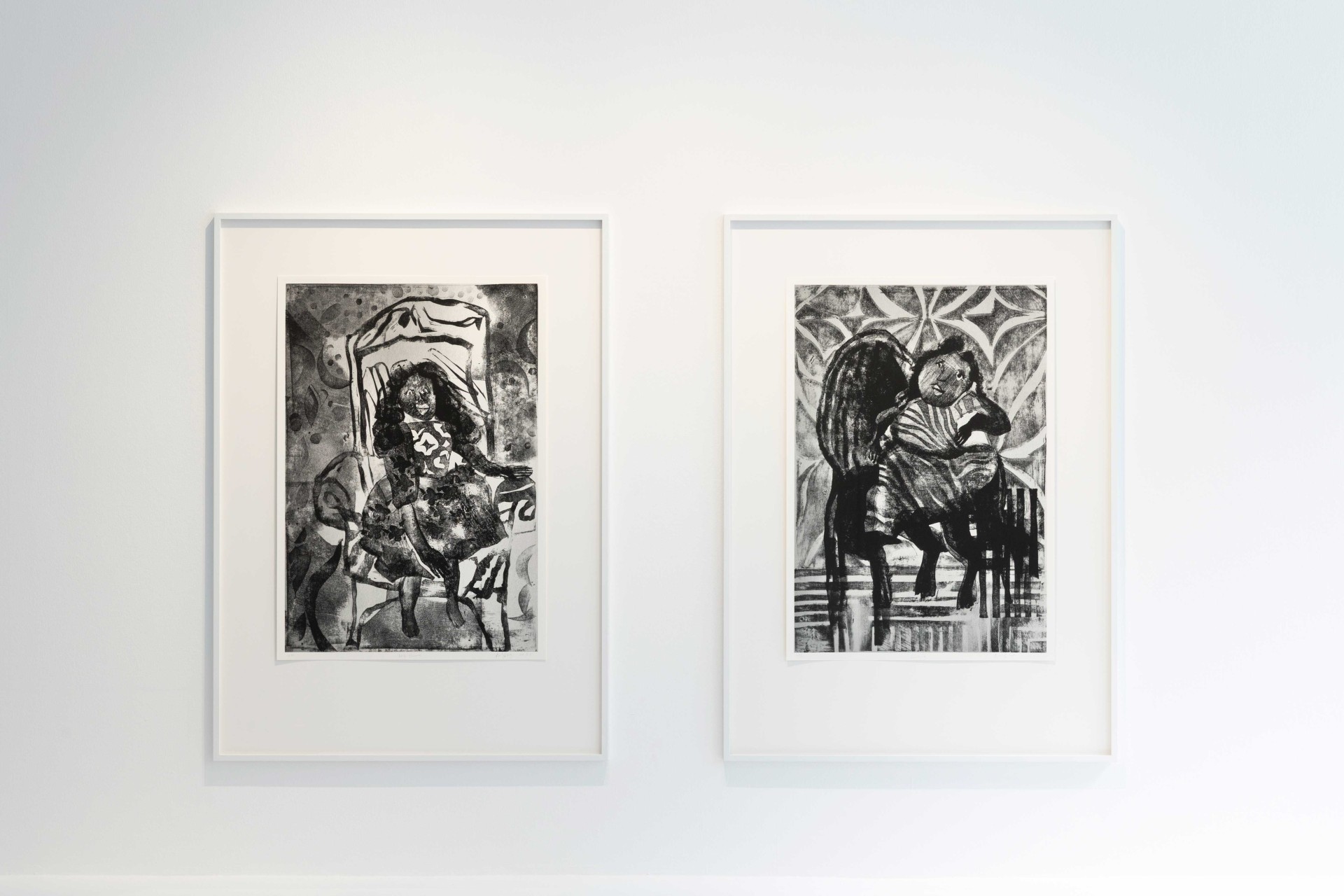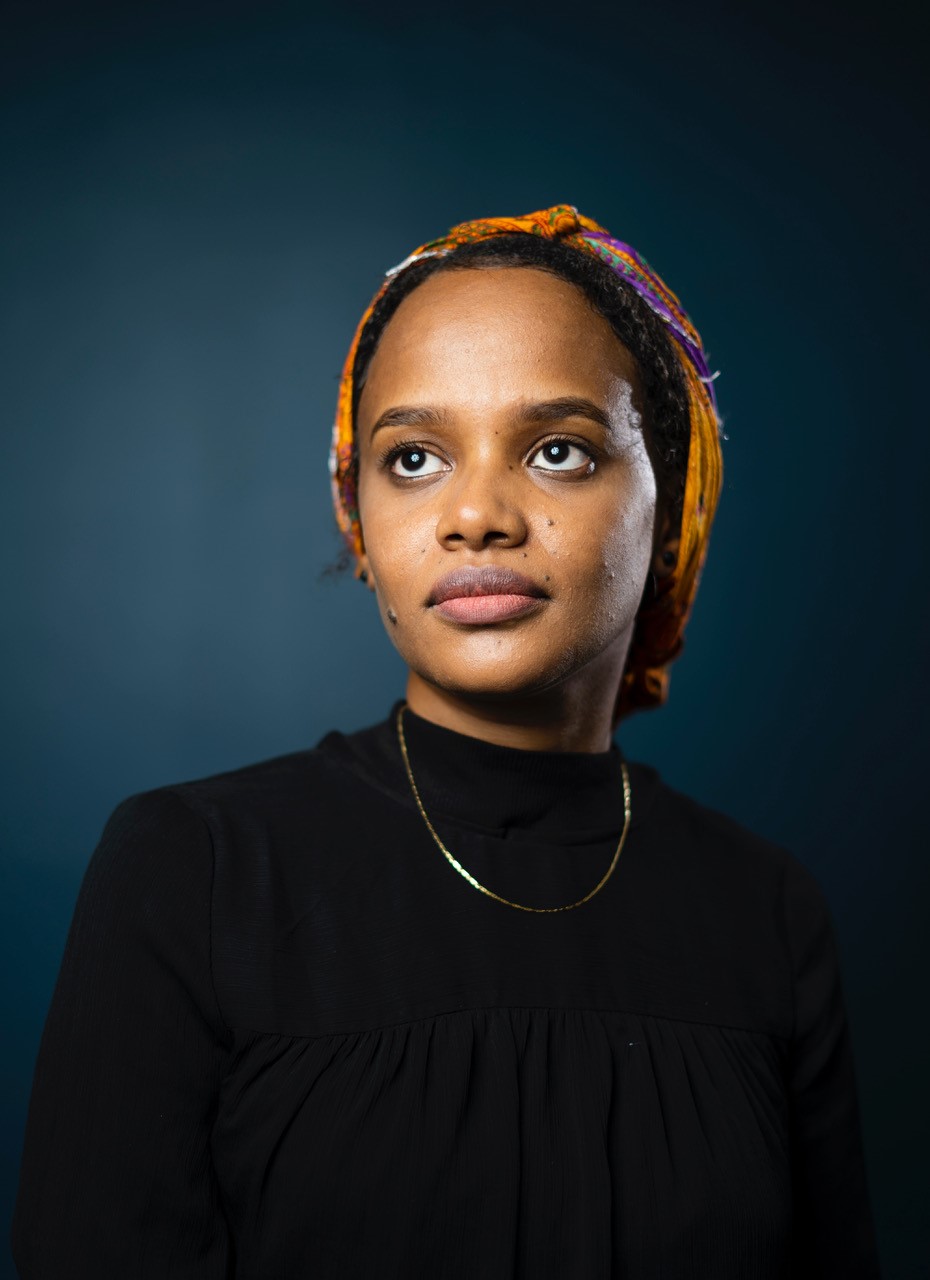SCHIRN Questionnaire:
Amna Elhassan
07/14/2025
9 min reading time
A look forward—a look back. Our author Theresa Weise asks selected artists who have created a site-specific work especially for the SCHIRN Rotunda the same 10 questions: from favorite artworks and texts, to routines in the studio, to thoughts on artistic practice and new projects. This time with Amna Elhassan.
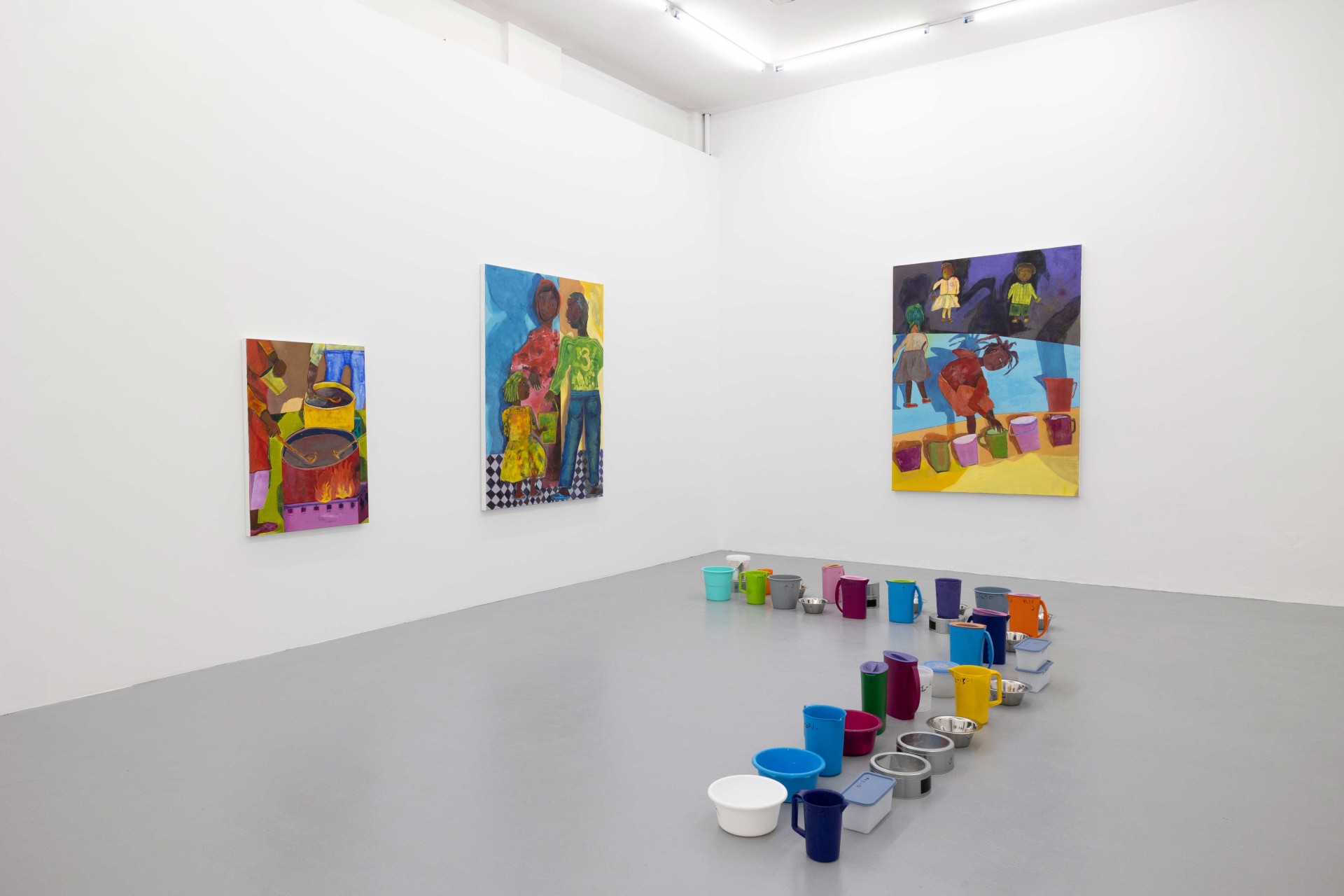
When did you first call yourself an artist?
Amna Elhassan
This was during the revolution in Sudan in 2019. The revolution gave me a sense of freedom, hope, and the dreams I had always longed for. It was a time of awakening—not just politically, but also personally. That year, I began sharing more of my artwork with friends and online on Instagram. I started to feel a shift: my work was being seen and accepted by many. It was then that I decided to fully devote myself to art. I realised that I can only be an artist.
But the awareness that I was an artist began much earlier. I was 16, preparing to apply to university in Sudan, when my father told me, “You are an artist, Amna.” That moment has always stayed with me. My father, a civil engineer by profession, has always had the soul of an artist. His passion for interior design, architecture, and painting shaped the creative environment I grew up in. In many ways, he recognised the artist in me before I did.
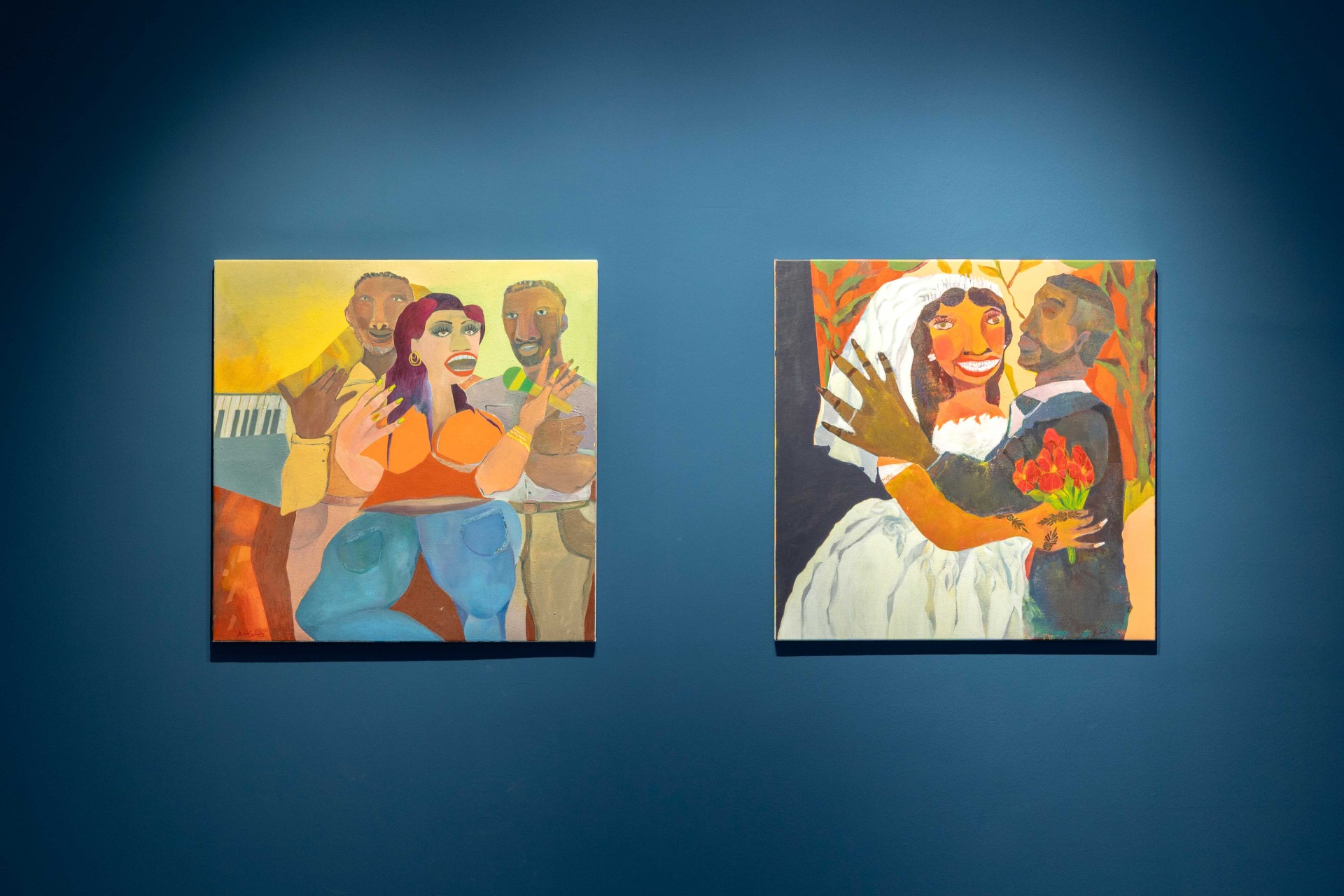
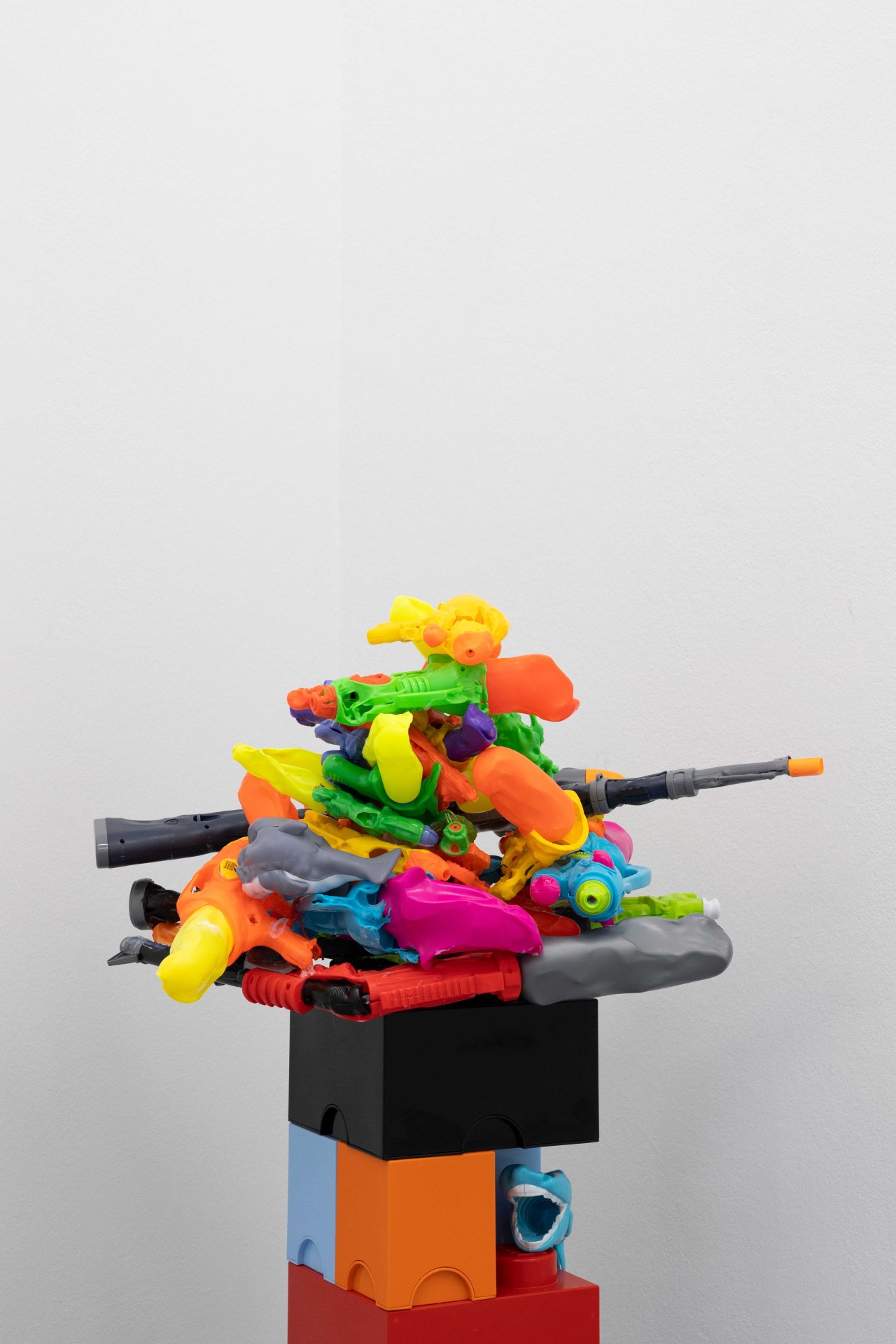
What does a day in your studio look like?
Amna Elhassan
My first studio was in my family home in Khartoum. My family gave me a room to establish myself as an artist, and my father helped prepare it as a studio. Those were beautiful days. I used to work for about seven hours a day, with time to spend with my family.
In my current exhibition at basis e.V. Frankfurt, there’s a photograph of my Khartoum studio after it was damaged during the war. Members of the RSF (Rapid Support Forces) destroyed the furniture and painted over my artwork. After the Sudanese Armed Forces took control of Khartoum, my cousin returned to our neighbourhood and sent me photos showing the damage to my home studio.
Since April 2024, I’ve had a new studio at basis Frankfurt. My daily routine depends on how busy I am with projects, but in general, I start working at 9 a.m. and continue until 5 p.m., with a lunch break around noon. Sometimes I receive visitors in the studio—friends, fellow artists, curators, and gallerists.
Lorem Ipsum
What were the central elements of your artistic practice for the SCHIRN exhibition in 2022, and how would you describe your current practice?
Amna Elhassan
At the SCHIRN, I worked on paintings and printmaking, and I created “December”, a large-scale mural. It’s still the largest artwork I’ve ever made. Currently, I’m exploring a wider range of mediums. During my time as a guest lecturer at HFBK University of Fine Arts Hamburg, I had the opportunity to witness students engaging with diverse areas of art, which was incredibly inspiring.
Right now, I’m working with sound, scent, sculpture, and installation. In my current exhibition at basis Frankfurt, I’ve extended my practice to include these sensory elements, allowing my work to engage the audience in more immersive and layered ways.

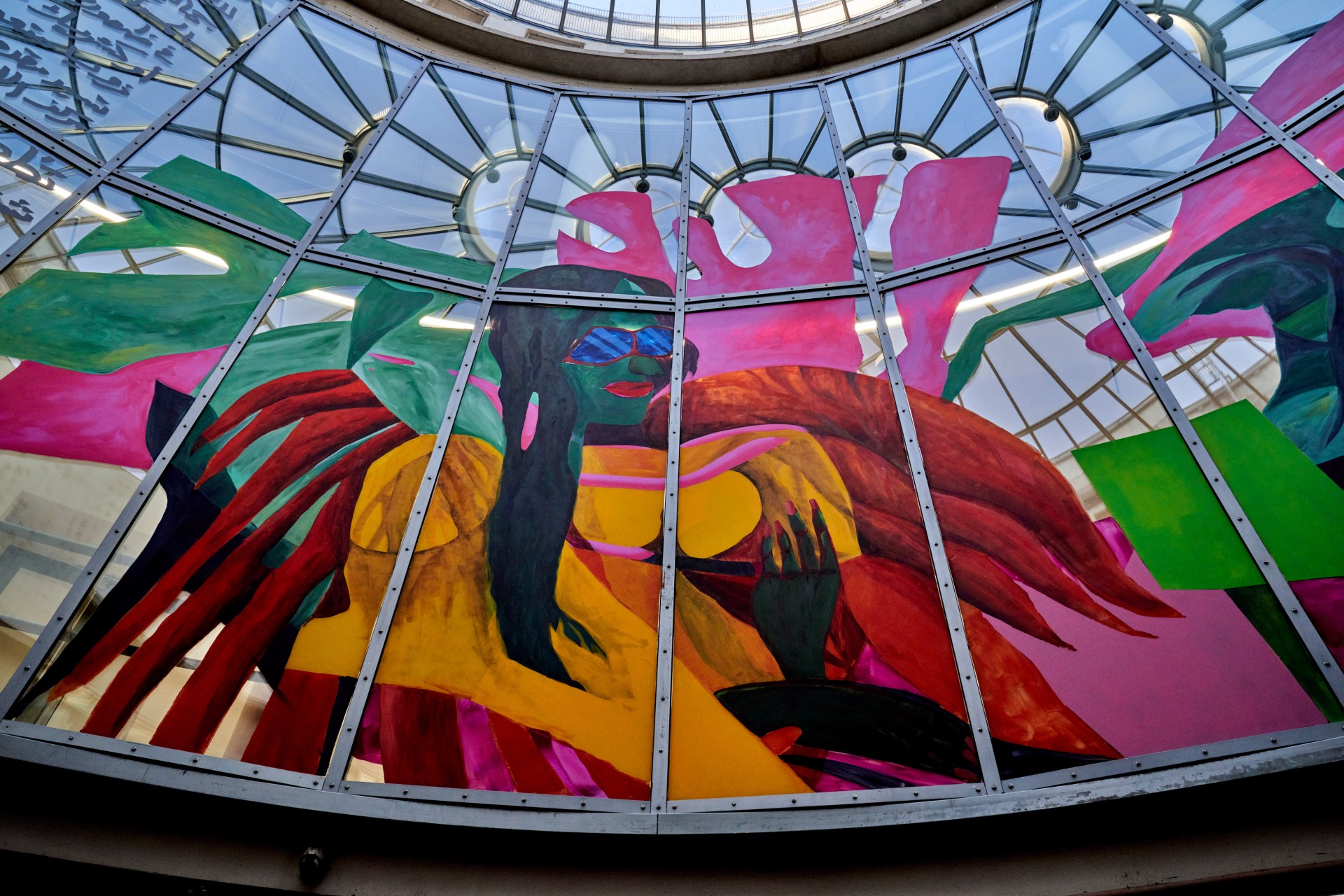
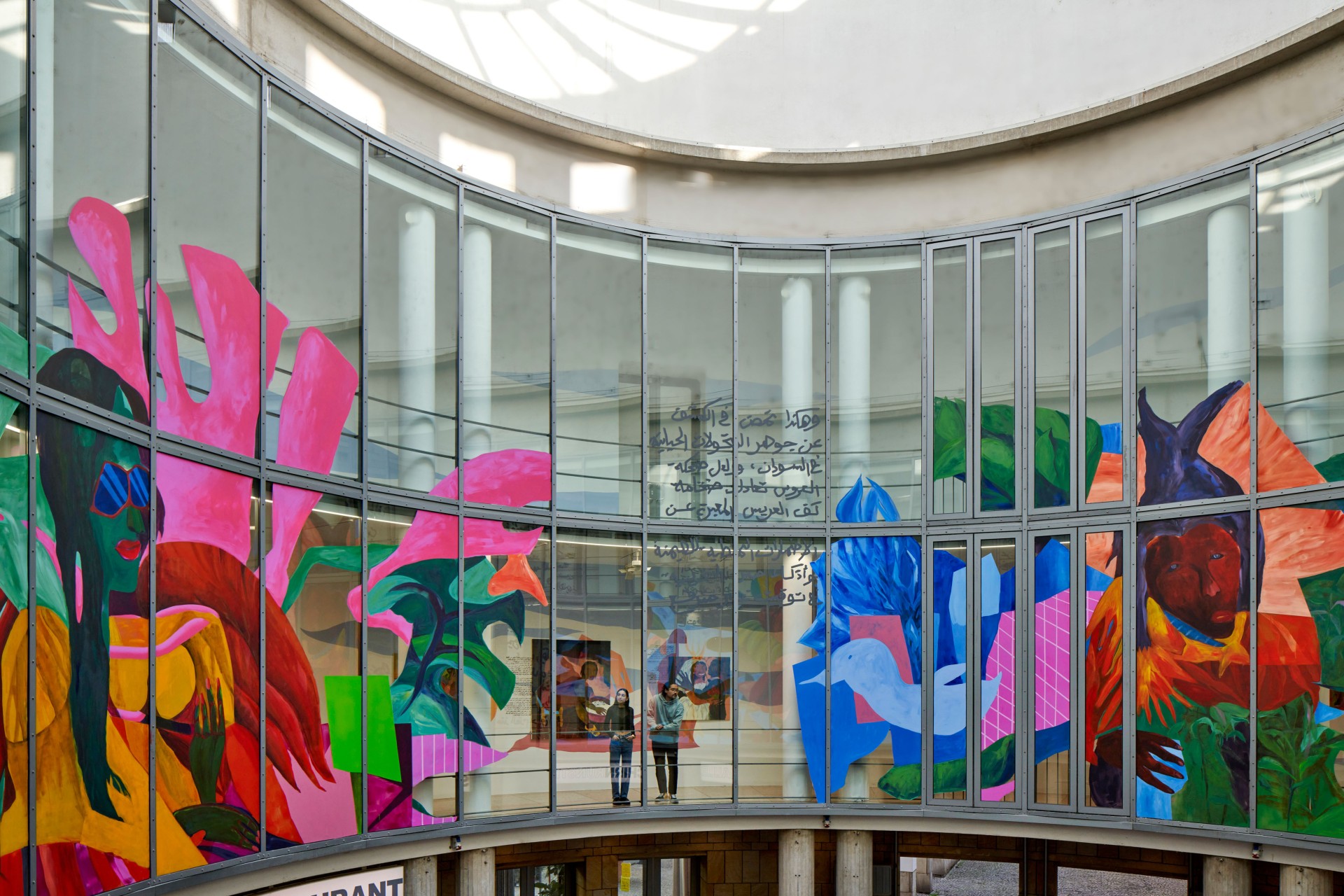
When do you know that a piece of work is finished?
Amna Elhassan
In painting, a work feels complete when it becomes colourfully mature, when the idea takes on expressive form, and when I feel satisfied and convinced by it. But being fully satisfied isn’t always necessary. When I look at a work constantly, it can become difficult to judge it objectively. That’s why I find it important to work with planning and in stages. When I reach the final stage in my work schedule, that marks the completion of the piece.
What is the meta-level of your work?
Amna Elhassan
Humanity is central to my practice. I’m especially engaged with the experiences of women and children, and I have a deep love for everyday people. I carry a strong sense of passion and belonging to my community. As a result, the spiritual dimension is always present in my work—it reflects the emotions, relationships, and values that shape my world.
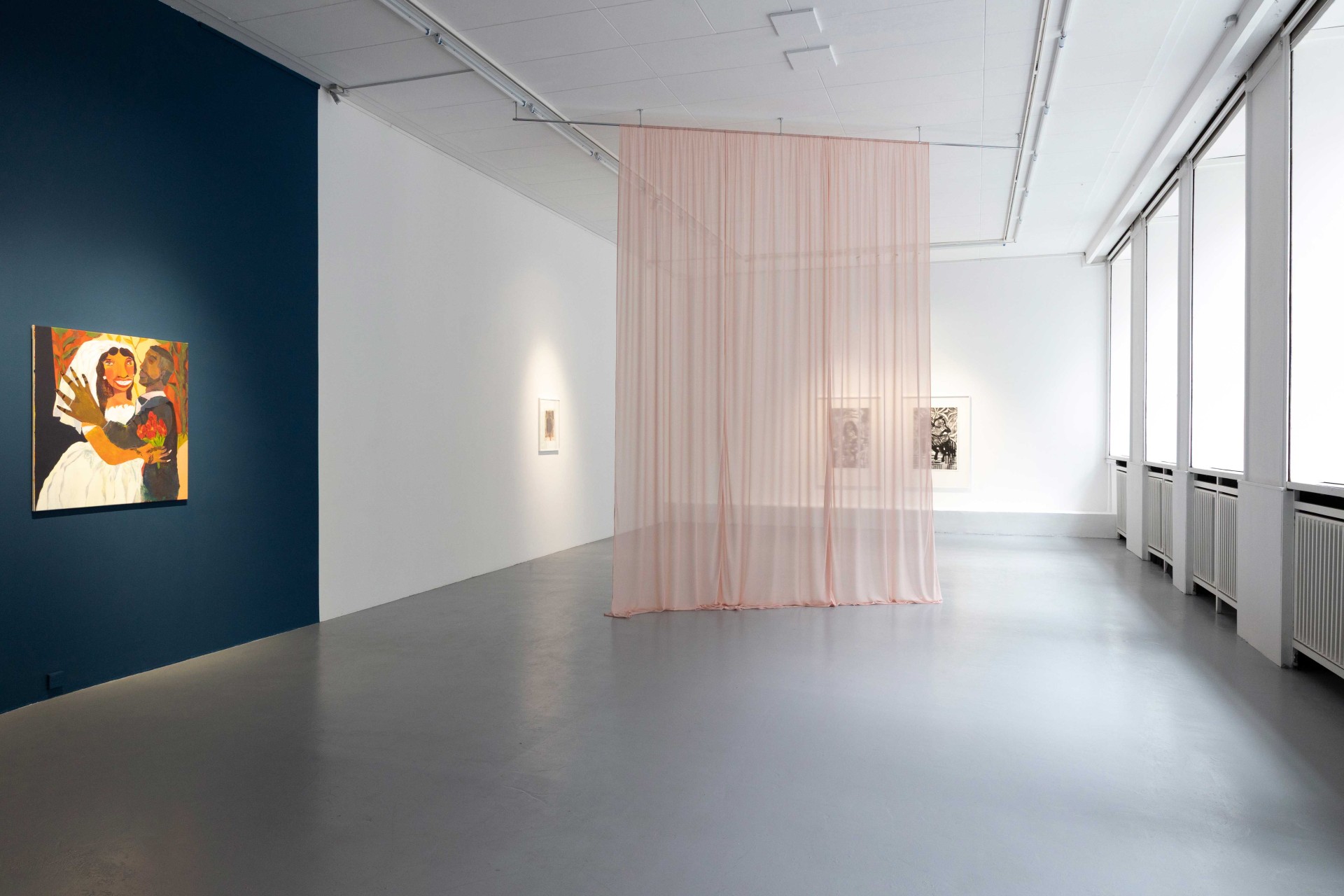
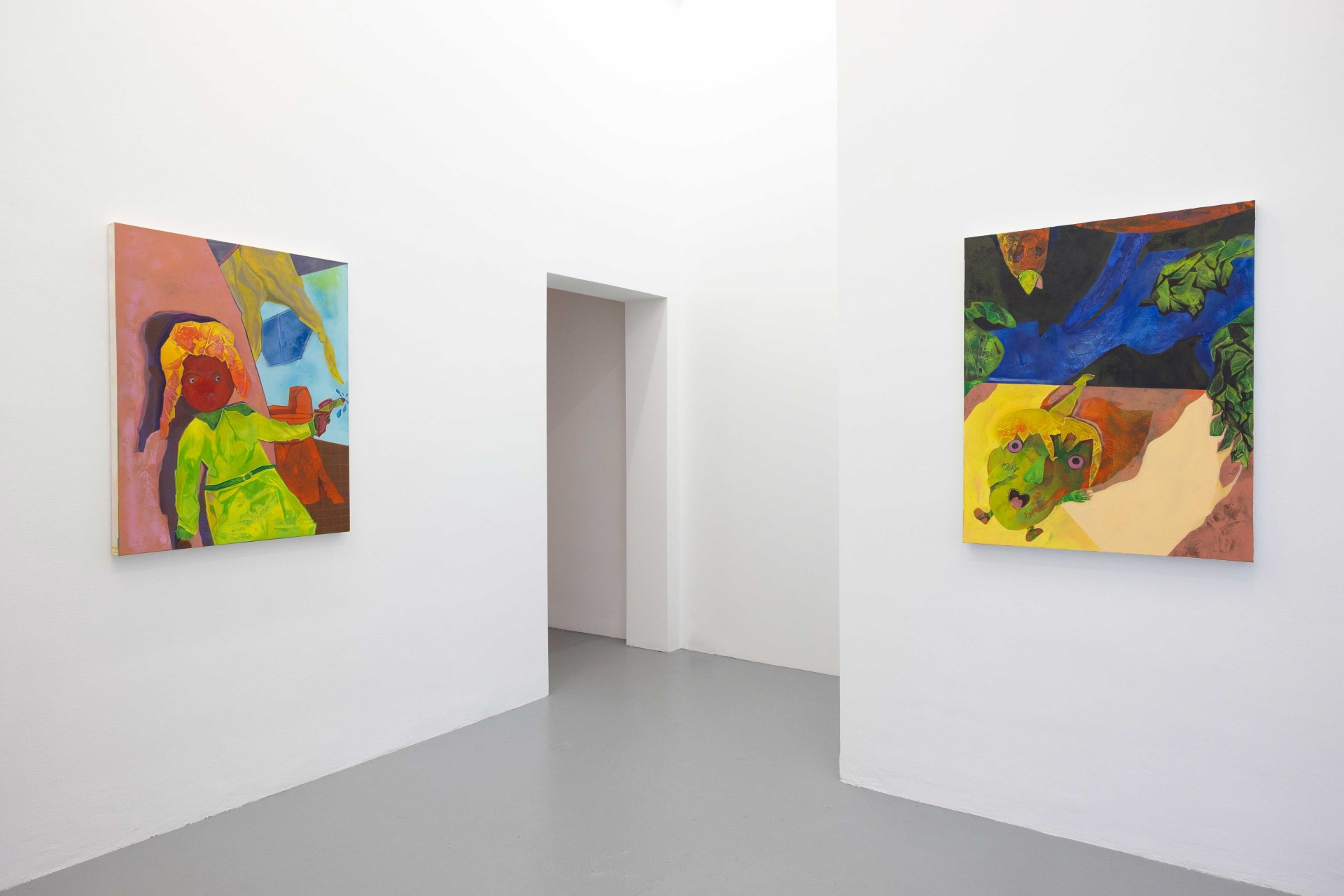
What is your most beautiful memory in the context of art?
Amna Elhassan
There are many beautiful memories connected to art. For example, every time I finish a piece, I feel excitement and joy. One special memory is completing “December” at the SCHIRN Rotunda—it was a wonderful moment. Traveling and experiencing different cultures through art has also brought many meaningful memories. I especially treasure the days I spent studying drawing and painting at the Khartoum Art Training Centre with my mentor, Hatim Koko. But I think my most cherished memory is setting up my first studio at my family’s house and receiving their full support. That was the best feeling.
Which artwork has influenced you the most in your life?
Amna Elhassan
I think I’m influenced by many artists and works, rather than by a single one. In printmaking, I’ve been inspired by Sudanese artists Mohammed Omar Khalil and Dar Alnaim. In painting and colour, I draw from the work of my mentor Hatim Koko, as well as Salah Elmur, Kamala Ibrahim Ishaq, Jordan Casteel, and Tschabalala Self.
My use of scent has been influenced by Azza El Siddique and the fragrant traditions embedded in the lives of Sudanese women. I also remember how Jessica Stockholder’s approach to materials shaped my thinking about sculpture and installation. And the work of students during my lectureship at HFBK in 2022 inspired me to explore new mediums and techniques.
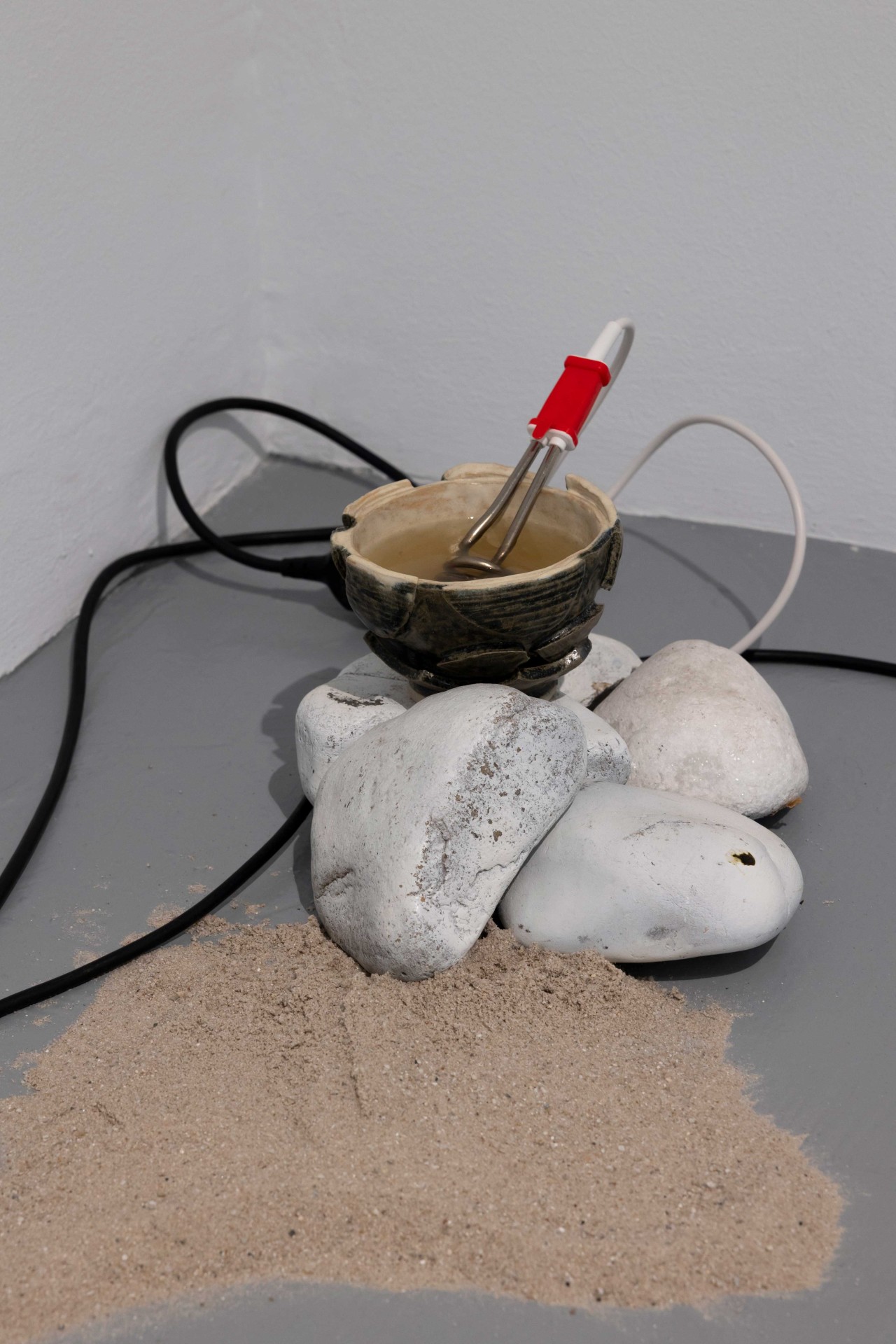
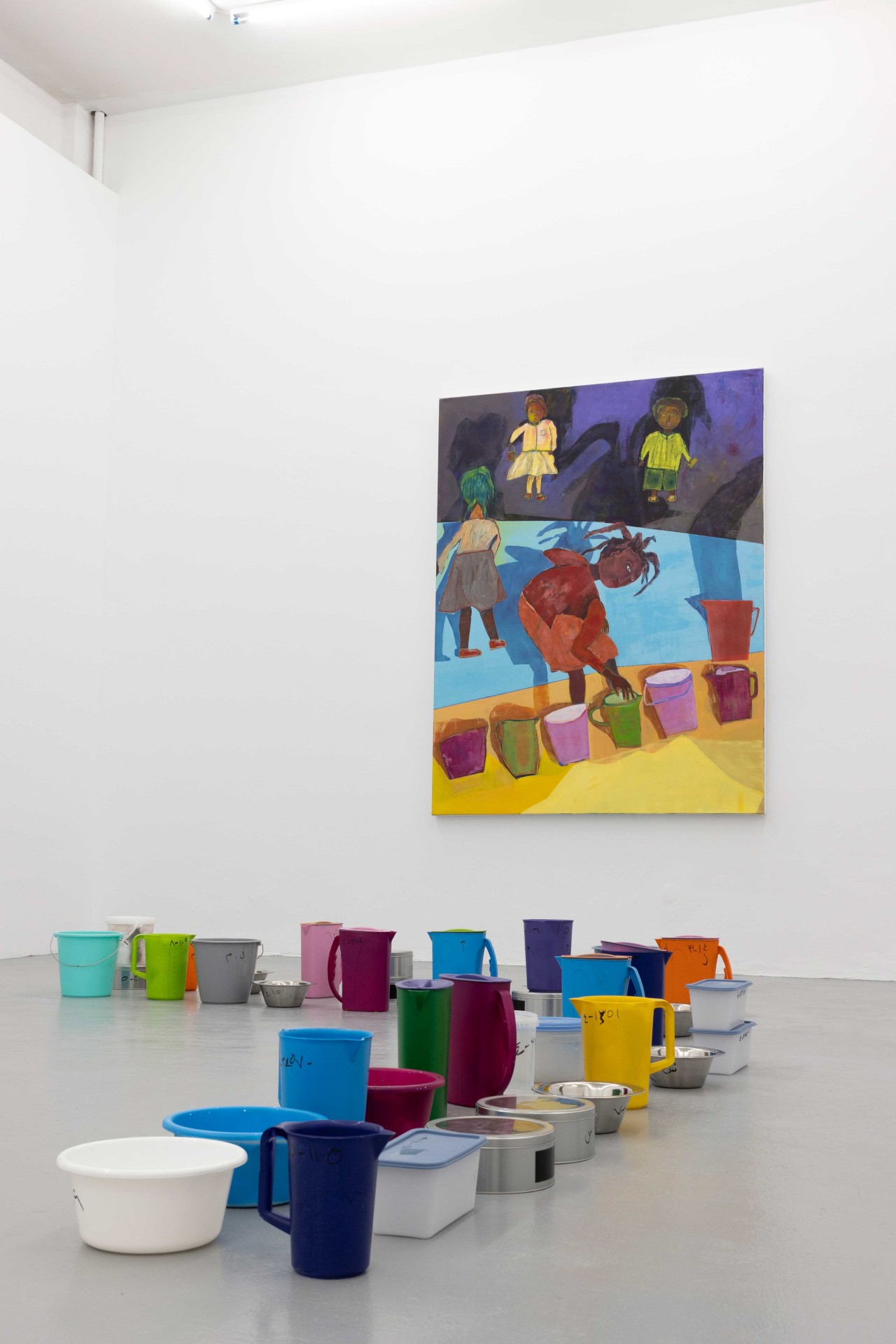
Which text (poem, essay, novel, etc.) should everyone read at some point?
Amna Elhassan
These days, the quote “At the end we all travel alone” from Tayeb Salih’s novel Season of Migration to the North often comes to mind. Since 2023, I’ve been travelling a lot—mostly alone and under difficult circumstances—due to displacement after the war in Sudan.
I love reading the work of Tayeb Salih. One of my favourites is The Wedding of Zein. He portrays rural Sudanese life so vividly. Whenever I deeply miss my hometown, Shambat Elhilla, I return to his writing.
I believe everyone should read Tayeb Salih. He is known for portraying cultural conflict between East and West. His work deeply explores the trauma of European modernity during the colonial era.
Which exhibition will you see next, and what project are you currently working on?
Amna Elhassan
There are many exhibitions I’d like to see in Frankfurt, but I’m especially looking forward to seeing what Henrike Naumann and Sung Tieu will present for the German Pavilion at the 2026 Venice Biennale. Currently, I’m enrolled in a postgraduate program at HfG Offenbach. My research focuses on artistic production that addresses violence against women in times of war and conflict.
If you had unlimited resources, what kind of artwork would you want to realize?
Amna Elhassan
Right now, I’m really enjoying sculpture. I’d love to create a monument in Sudan dedicated to all Sudanese women who were victims of violence during the war. I imagine it placed along the Nile—a monument as powerful and magnificent as the one I created for the SCHIRN.
